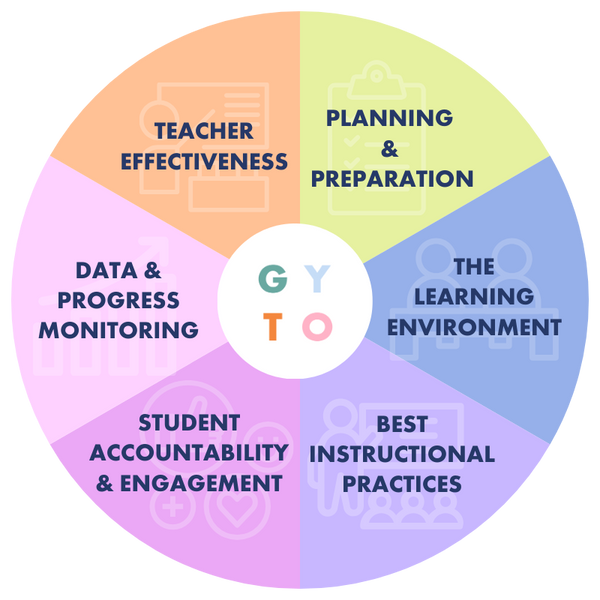
Alignment &
Research

ALIGNMENT
BUILDING THE TRANSFORMATIVE TEACHER
Each intentionally designed Get Your Teach On session is aligned to support teacher growth and educator effectiveness in one or more of the following areas:
-
Intentional and meaningful planning using specific grade level content standards and high quality instructional materials that address the needs of all learners and support mastery of learning goal.
-
Creates and maintains a collaborative, safe, efficient, and effective learning environment that supports each student’s diverse needs and promotes recognition of students’ diverse personal experiences to build relationships of trust within the classroom.
-
Implementation of evidence and research-based best instructional strategies and techniques to accelerate student learning, growth, and achievement through rigorous and consistent instruction, including opportunities for problem solving, critical and creative thinking, meaningful and purposeful discourse, and high-impact instructional delivery.
-
Continually monitors and analyzes student learning and progress towards mastery of learning goals for all students using a variety of progress monitoring and assessment techniques to make immediate instructional decisions that support student growth and acceleration.
-
Builds engaging, intentional, and rigorous learning experiences through setting high expectations and consistency within instructional practices that requires all students to take ownership of and be held accountable for their individual learning.
-
Develops strong foundational teaching practices and commitments that support best practices and professional growth through consistent reflection of professional practices to support student learning, development, and achievement at a high level.

Research Citations &
Standards Alignment
Research Citations
Our goal is to continually provide teachers with high-impact, research-based, best instructional practices, shown in action with a high level of student engagement to see true results with students. Each GYTO session is developed on the foundation of proven research based strategies within education. The following research is embedded into all sessions following the GYTO Instructional Model for Best Instructional Practices and Student Engagement.
Best Instructional Practices Foundational Research Pre K-12
Hattie, John (2012) Effect Sizes Related to Student Achievement
Learning Sciences International Applied Research Center
Marzano, Robert (2007, 2017)
Wong, H. K., & Wong, R. T. (2009)
Fuchs, D., & Fuchs, L. S. (2006)
Student Engagement Foundational Research Pre K-12
Dyer, K. (2015)
Csikszentmihalyi, M. (2008)
Sousa, D. A. (2016). Engaging the rewired brain.
Toth, M. D. & Sousa, D. A. (2019). Achieving social, emotional, and cognitive learning in every classroom through academic teaming
In addition to the cited research above regarding overall best instructional practices, our GYTO presenters continue to integrate and include rigorous, content-specific research into their individual sessions, addressing grade level standards PreK-Middle School. This ensures that each session is specific and meets the needs of those grade-level teachers. The research below is integrated and embedded into your specific grade level sessions.
Research Citations and Standards Alignment for each session can be found throughout our Conference Guides for each Get Your Teach On Conference.
Our Dallas National Conferences are also aligned to TEKS. Please see the Conference Guides page for those standards and alignment.



